A Detailed Look at the New Polar Grit X Pro
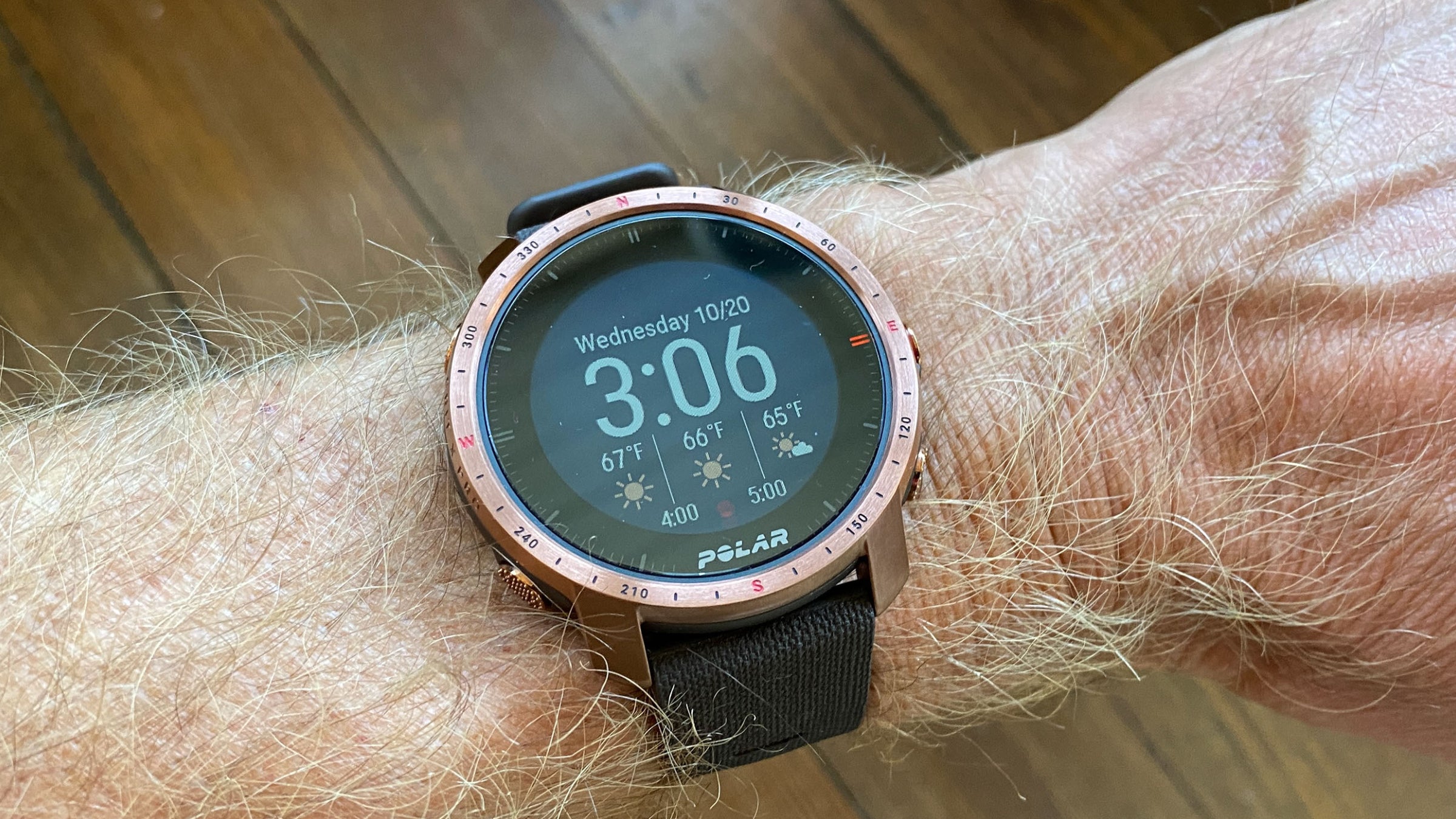
Table of Contents
Polar has been in the watch game since before smartwatches even existed. For years, their devices were just about the only game in town if you wanted to accurately measure your heart rate for heart-rate training. And for triathletes, heart-rate training has been the near-gold standard since the days of early aerobars. Once the Apple Watch arrived on the scene and smartwatches started to become A Thing, Polar sat on the sidelines as brands like Garmin took control of triathletes’ wrists—becoming almost like Xerox or Rollerblades. Did you wear your Garmin during that last session? (Whether your smartwatch was a Garmin or not.)
But just as the Finnish brand seemed, well, finished, they came back alive with the Vantage line, released in the summer of 2018, and since then have finally been competitive in a crowded smartwatch market. Though the first iterations of the Vantage line (and a year later, the trail/outdoor-focused Grit X) were good starts, they lacked a lot of the basic features that triathletes had come to rely on—while including some we didn’t even know we needed (like running with power). In the three years since, Polar has evolved their products, and with the Vantage V2, M2, and now the Grit X Pro, Polar has finally arrived in the front pack.
Polar Grit X Pro: The Features
Here we’re going to dig in deep to both the existing Grit X features and the new ones from the new “Pro” model. If you’re interested in a quicker, TL;DR analysis of the Grit X Pro, then check out our shorter, free review here. Below, we dive into the most important features to triathletes—ranked in order of tri-importance—and identify what’s actually new on this watch.
Tri-Related Sport Profiles – This should always be the first thing triathletes look at when they’re thinking about getting a new smartwatch for training and racing. The new Polar line has always had decent open-water swimming, pool swimming, cycling (with some advanced cycling metrics, but not all), and running (including on-wrist power). We’ll get into the multisport highlights below.
Multisport Profiles – It also has a triathlon sport profile that’s good for a straight swim/bike/run tri with things like transition times. One hard-to-find function on the Grit X Pro (that triathletes really need to know about) is the Multisport profile. Though it’s not listed in the sport profile on the Polar Flow app, it appears on the watch and allows you to do any sports in any order, as many times as you want by hitting back and starting another sport. This is helpful if you’re doing a swim/bike or bike/run brick workout with many iterations or maybe a swimrun event. It does the job and also measures transition time—whether you want it to or not. It’s a little clunky, but at least it’s there.
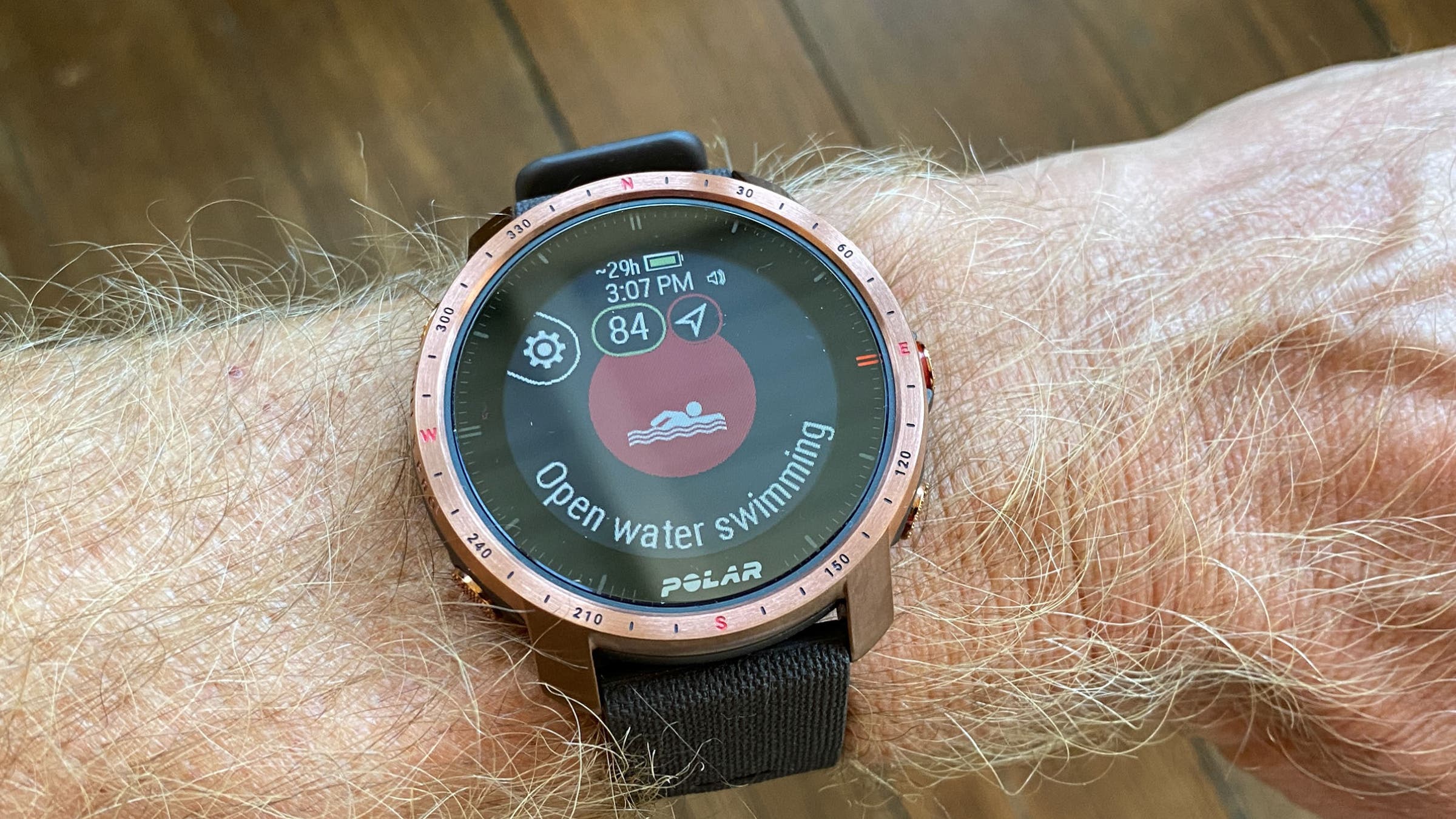
Running and Cycling Tests (New to the Grit series) – These guided tests help you not only gauge your fitness and benchmark improvement, but they also autopopulate the training zones in the Polar Flow app and web service. For the running test, you’ll run at prescribed speeds that ramp up until either a submaximal or maximal limit. For the cycling test, you’ll need a connected power meter to perform a pretty standard FTP (functional threshold power) test at either 20, 30, 40, or 60 minutes. Both of these functions are nearly essential for intermediate/advanced tri training, and having them built in is nothing short of amazing.
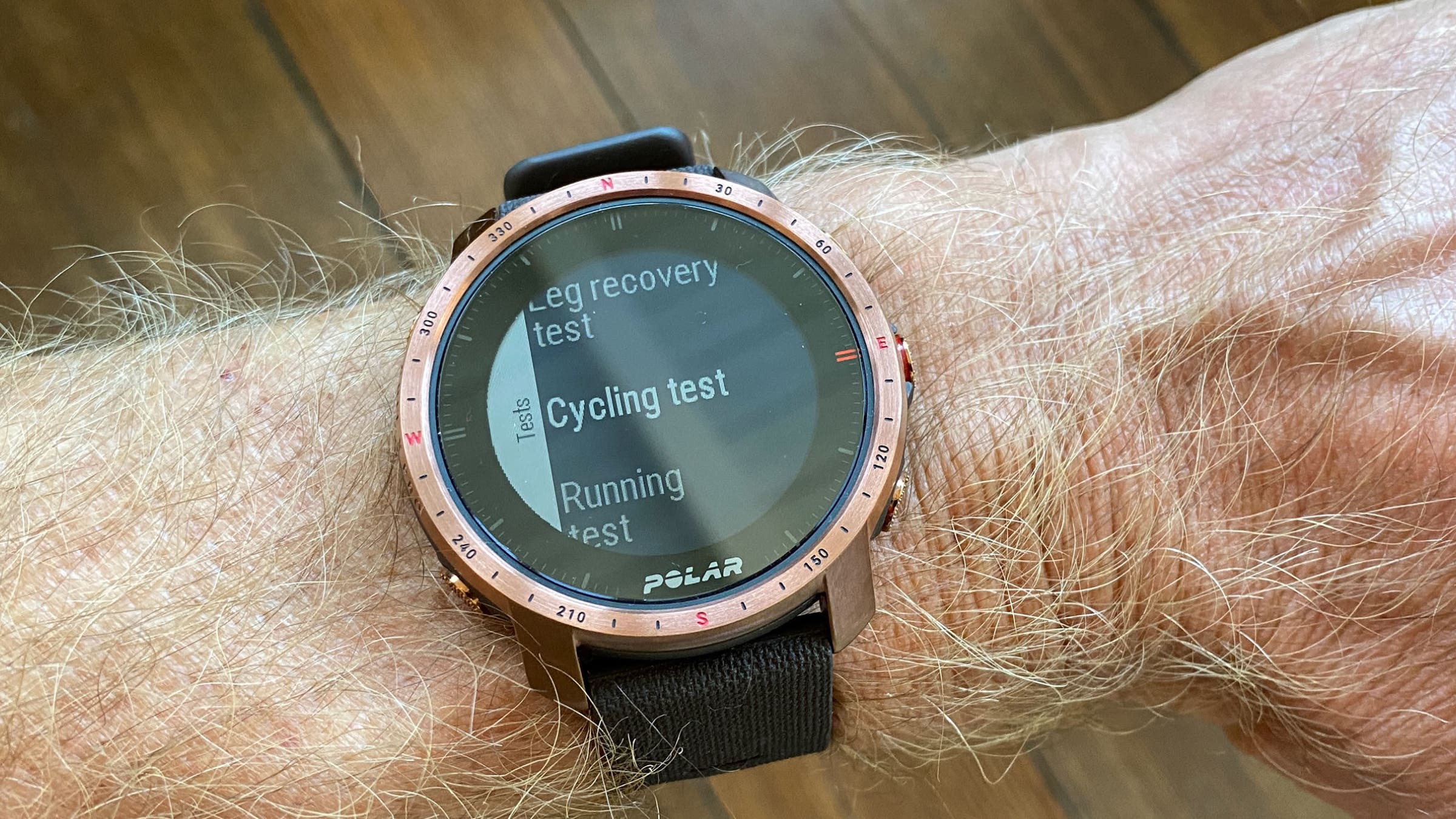
Training Load Pro and Recovery Pro (New to the Grit series) – Both of these are lumped together because both of them use accurate heart-rate info and training data to determine how much stress you’ve put on your body and if you’re prepared for a heavy training day or need to rest. The Recovery Pro feature needs an external heart-rate sensor, but it’s very accurate in terms of tracking fatigue. This is another very very important set of functions for triathletes.
Built-In Running With Power – This is one of those features that might not sound familiar, but should start becoming a staple in multisport watches. The only other brand with built-in running with power is Coros, so if you don’t have a Polar or Coros watch, you need an external shoe sensor like the Stryd. While it’s not quite the same as a cycling power meter, running power is a great way to gauge effort on hilly courses and gauge efficiency when used in conjunction with speed over a known distance.
Nightly Recharge – The Polar line has one of the most accurate and easy-to-understand sleep tracking features of any smartwatch out there. It lets you know not only the length and type of sleep, but also the quality of your rest. This is particularly useful, again, for triathletes who need to get proper recovery before tough training days if they want to actually improve.
New Dashboards (New to the Grit series) – Dashboards are Polar’s little variations on their watch faces, and while they may not seem that important, if you’re wearing this watch all the time (which you should to get the most accurate physio readings), they matter. Polar has actually done a great job with its weather dashboard that gives you the next two hours’ weather and then digs in deeper to hourly weather with other metrics. It’s daylight dashboard tells you not only sunrise and sunset, but also (more importantly for triathletes) dusk and dawn, and how much light you have left, graphically. The compass and altitude dashboard is also surprisingly handy for manual navigation, and the heart rate dashboard works better than most other brands’. Each dashboard can be turned on or off and most have expanded data when selected.
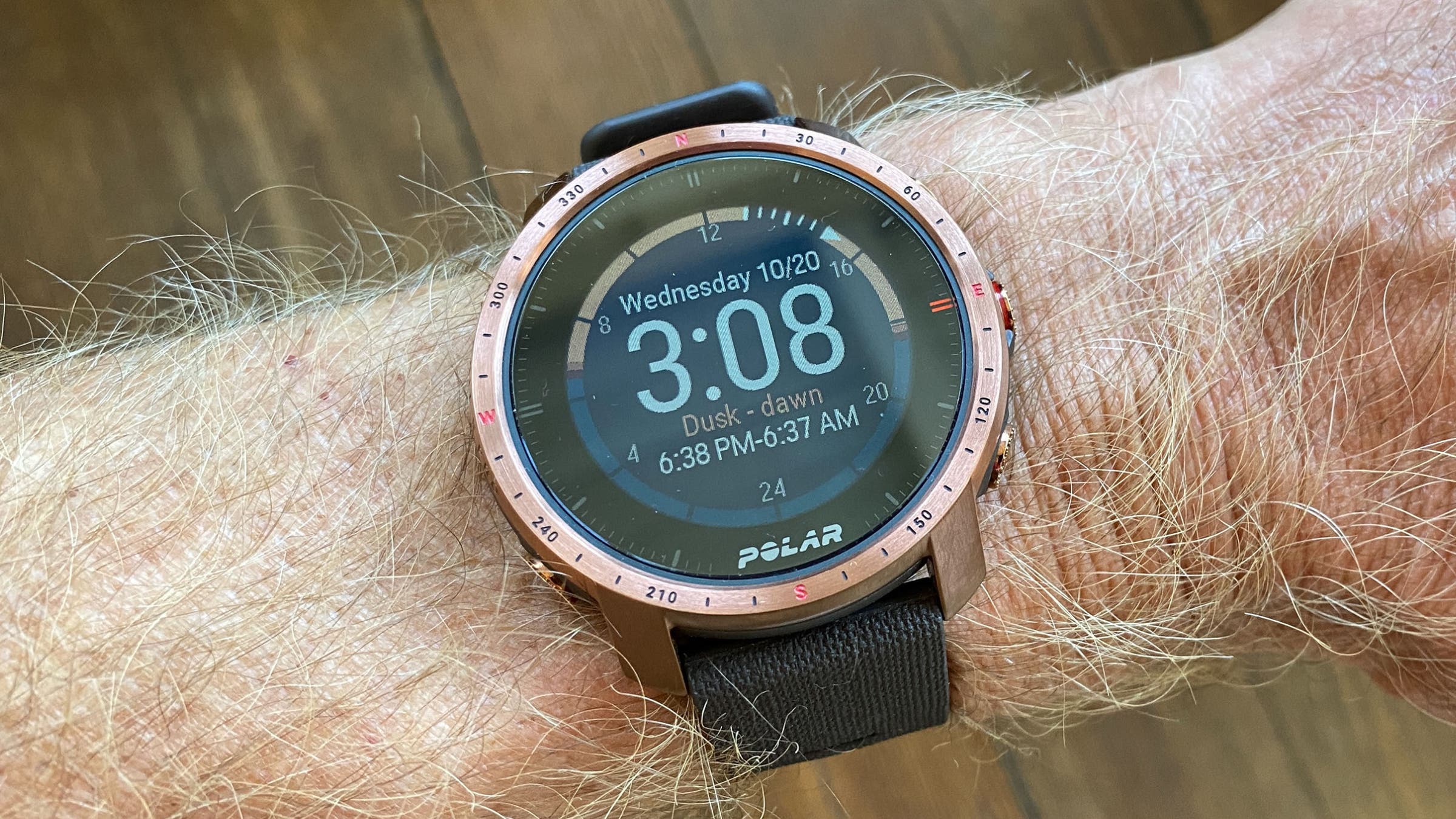
Enhanced Navigation (New to the Grit series) – While the old Grit X did some breadcrumb navigation when paired with third-party app Komoot, the new Pro also adds turn-by-turn navigation (a feature that’s more rare than you might think), reverse route, and a very cool in-route elevation page that shows current grade while running.
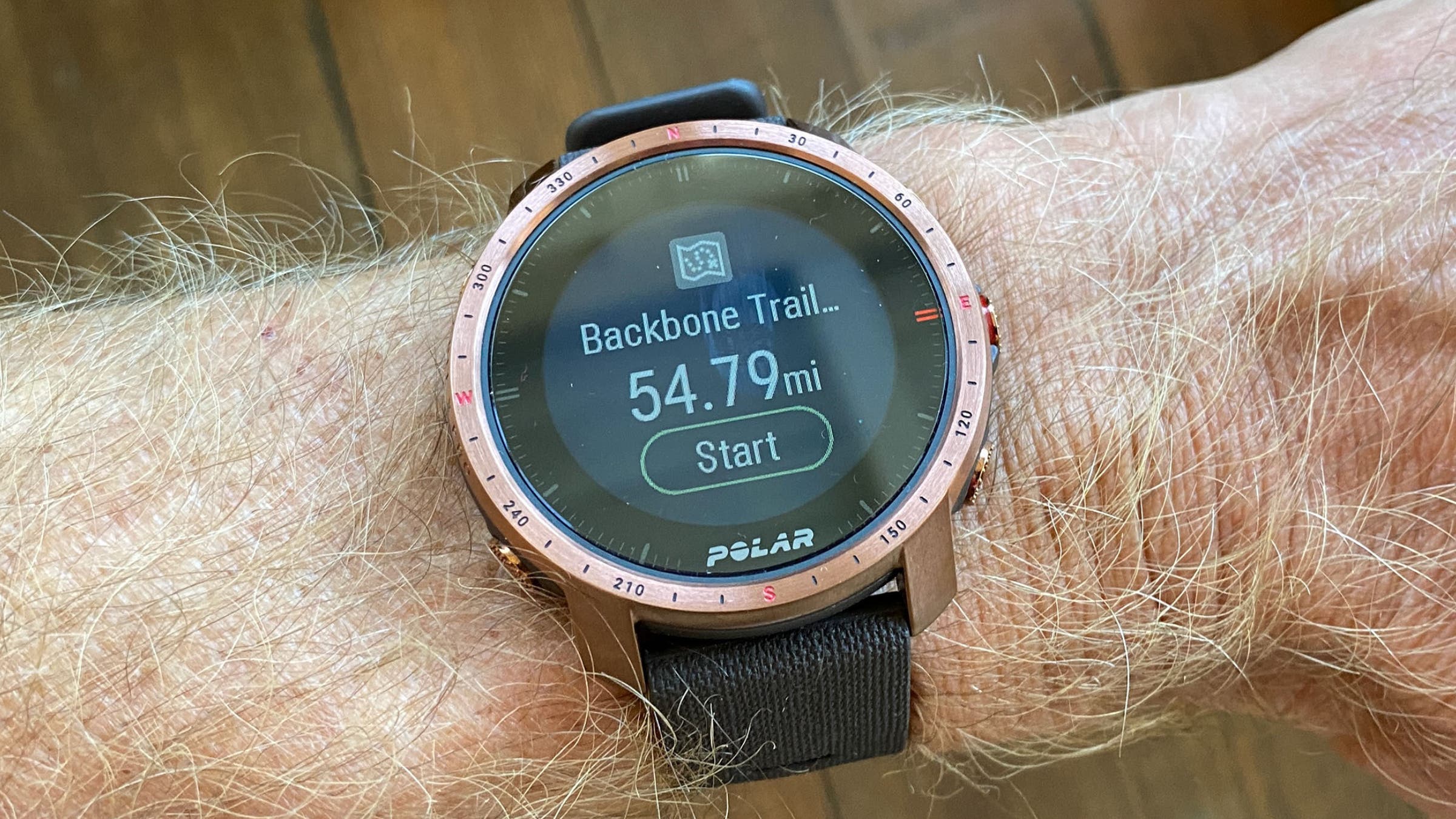
Music Control (New to the Grit series) – Though this is not something groundbreaking, it’s notable because the old Grit did not let you control smartphone music and had no music functions at all. Now there’s a music dashboard (which works surprisingly well on any media that’s playing) and controls. Note that the watch does not locally store music on the device.
Polar Grit X Pro: What’s New
While a lot of the “new” features on the Grit X Pro are actually either already available on the Vantage V2 or will be available on the old Grit X soon via a software update, there are a few functions and details that are novel to this watch. Things like the dashboards, the route page, trackback routing, and a few others fall into the “brand-new” feature list, but they are also being updated onto the Vantage V2. In terms of what the Grit X Pro has that the Grit X will never get, the list is short—running and cycling tests, leg recovery test, reverse route, daylight dashboard, and a few others that aren’t terribly important to triathletes.
Confusing? Well, yeah. The biggest things that differentiate this watch from the old Grit X are navigational (maybe important) and the performance tests (very important to triathletes). The biggest difference between this watch and the Vantage V2 is…well…nothing. The Grit X Pro has sapphire glass, more rugged styling, and a few extra grams, but not much else. From an asthetic point of view, the Vantage V2 screams “ask me about endurance sports” while the Grit X Pro is more understated—you might be subtly suggesting “ask me about the outdoors.”
Otherwise, this is more of a light software update from the Grit X and a dirtier colorway of the Vantage V2, for better or for worse.
Polar Grit X Pro: What We Like
Once you get through all of the “this is new, this isn’t new, this is different, this isn’t,” there’s a lot to like in this watch. It hits all of the multisport nails on the head with its sport profiles, and honestly the running/cycling tests should make this a no-brainer for anyone looking to do targeted, zone-based training (this should be lots and lots of triathletes). Having a watch with built-in, guided tests that also computes the info and plugs it into zones in the back end saves a lot of time and energy (and potential for error). I actually don’t think Polar makes a big enough deal of this to the multisport crowd—particularly given how many of our training plans require this information to be benchmarked often.
Elsewhere, the features that rely on accurate heart-rate data (and this heart-rate sensor is quite accurate, mind you) are very good and well thought-out. The sleep analysis is robust, consistent, and usable; the recovery pro and training load metrics are similarly helpful to triathletes. Even the leg recovery test is interesting if nothing else and at least gets you thinking about the many facets of fatigue and recovery (i.e., sometimes it can be overall fatigue, sometimes it can be localized muscular fatigue). This is the watch for those who really want/need to know how their body is responding to make educated decisions about their training (or to help their coach do so).
Simply from a running standpoint (which is what most triathletes will use this watch for), the elevation profile screen, the grade display, and the built-in running with power are all incredibly useful—especially if you train on trails. Even if you don’t, the three aforementioned features could potentially help you successfully pace the run leg of your next race.
All of these things will help you separate the “I’m feeling” from the “I’m actually doing”—parsing the fact from fiction that can oftentimes lead triathletes to self-inflicted disaster while training or racing.
Finally, while the training features and functions are certainly this watch’s strengths, one of my biggest complaints about the early model Vantage watches was that you could work out in them, and nothing more. With the updates found on the Grit X Pro (bearing in mind that the Vantage V2 will have all of the same software updates), Polar finally has a watch that can be worn everywhere. The lifestyle functions like the dashboards, the music control, and the styling ensure that this is a watch that will be useful at work, while hiking, driving around, whatever. With this model, Polar has finally made something that could compete with the everyday use of Garmin and Suunto (sorry, probably not on the Apple Watch level yet).
Polar Grit X Pro: What Could Be Better
So nothing is ever perfect, and while Polar has hit so many of the details really, really well, they’re still facing some pretty glaring hardware limitations. First, something I’ve really been preaching is important to triathletes is super sub-par: the battery. Though Polar advertises 40 hours of training (100 hours in power save) and seven days in smartwatch mode, I found it used up battery much faster than that. With one to two workouts each day and wearing it at night, I was recharging it once every three to four days. And that’s without ultra-long swims, rides, or runs. My best guess is that all of the cool real-time updating dashboards and animations and biofeedback functions probably eat up a ton of battery—more than even Polar might like to admit. I’m also guessing the touchscreen eats up a bit of battery as well (notice this is the first time I’ve mentioned it has a touchscreen, more on that soon).
While I would hate to complain away the great functions I just listed above for the sake of battery, I certainly wouldn’t mind a slightly bigger watch or no touchscreen if it drew the battery life out to an advertised two weeks (which would probably look more like a week of triathlete-use). The big downside to the short battery capacity is I found myself wanting to charge the watch at night, which defeats the purpose of the excellent sleep metrics. It also made me nervous on long workouts—afraid it might bite off more than it could chew.
Next, the response time of the processor is one of the worst I’ve ever seen in a modern smartwatch. This means the time from when you press a button to when the screen reacts. Though this issue is slightly annoying when using the watch on a day-to-day basis, it’s downright infuriating when you’re hitting lap on a workout, or trying to start and stop your watch on an interval. It also makes navigating the watch menus and dashboards such a task that you end up not using certain functions because they take too long to load.
Finally, the touchscreen. Polar: Do like Coros has done and only activate the touchscreen for things like panning maps. The touchscreen on this watch is not only painfully slow with response (even worse than the buttons), but it’s also entirely superfluous. The buttons can literally do anything the touchscreen can, except accidentally get pushed when you don’t want. There has never been a time when I’m using this watch where I’m thinking, “Boy, now’s a great time to use the touchscreen.” A lot of that has to do with how unreliable it is, but mostly it’s just not something the watch needs.
Takeaways
It’s too bad that I had to end this review with those big hardware limitations that the Grit X Pro has because really this watch has so much going for it. I’m guessing all of that stuff is something that Polar is working on, and I wouldn’t be surprised if something about the pandemic affected their ability to get newer chips/processors/batteries/etc.
The good news is Polar has finally gotten the recipe right on their line of watches in the last three years. They finally cut the tech gap in half back in 2018 with the release of the Vantage line, and that distance has been reduced to almost nothing with the release of the Grit X Pro (and Vantage V2 updates). It’s hard to find a feature or function that’s missing from this new watch, and this new watch has a lot of great stuff that other smartwatches aren’t even thinking about yet. For triathletes who are patient with charging and button presses, you’ll have a hard time finding a smartwatch that does all of the important things we need. Hats off to Polar for putting together a great watch that truly serves the needs of the multisport athlete.